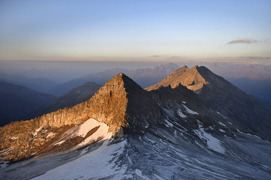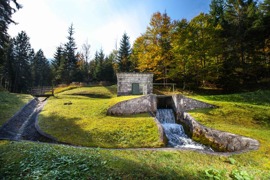Terra Mater Studios GmbH
Wambachergasse 21130 Wien
Vienna, Austria

As dedicated nature filmmaker Terra Mater Studios are aware of their responsibility to spot a light on fragile parts of the world, to give a voice to threatened species and to make a positive impact on our precious planet. TMFS’ credo: We need to be able to learn from the mistakes that were made, for our own sake and that of generations to come.
Terra Mater Studios. Inspired by nature. Caring for nature.
#terramatters
Collider Diaries
Personal vignettes of 5 young scientists from the edges of life and science at CERN. This It was shot nearly complete Remote all over Europe.
Find out more here: https://bit.ly/3ykKuDB
Hippo King
Hippo King – the intimate portrait of a hippo-bull is a visually stunning nature-film, which was produced in cooperation with Skyland Productions, Into Nature Productions, Doclights/NDR Naturfilm and the WNET-Group. The shooting took place in the South Luangwa National Park in Sambia, Africa. Lianne and Will Steenkamp, who did camera and directing, lived in the National Park for more than three years. The postproduction was processed remotely, for that reason travels could be avoided and the finishing took place in Vienna.
Wenn die Alpen glühen
The Alpenglühen – the play of colors on the mountain peaks in the morning light – now carries a second, less romantic meaning. In the Alps, global warming is making it hotter, with already dramatic consequences. The rapid and substantial onset of climate change has even surprised researchers.
On July 12, 2023, a massive rockslide occurred in the Tyrolean village of Galtür. A large portion of the Fluchthorn peak above the Jamtal Hut crumbled, sending tens of thousands of tons of rock onto the plateau below. Miraculously, no one was injured. The cause was melting permafrost. The gray ice was deeply embedded in the rock and had acted as a kind of glue holding the steep walls together. Until now, as sensitive rock regions in the Alps are being monitored by drones. Cameras detect any suspicious changes in the rock, and increasingly, they read "closed due to rockfall danger." While scientists predicted climate change decades ago, its rapid and substantial impact in the Alps has surprised researchers.
Even Faster Warming in the Alpine Region
In August 2023, a record temperature of almost 15 degrees was recorded at Sonnblick, at an altitude of 3,000 meters. The Alpine region is warming faster than elsewhere in Europe. Not only are glaciers receding, but the ice in the caves of the Alps is also melting away.
Climate change is affecting both humans and animals. Marmots, for example, are poorly suited to heat and are migrating higher up the mountains. But there's an upper limit to how far they can go because in high alpine areas, the layer of humus is too thin for them to dig burrows. With rising temperatures, chamois also face new adversaries, like the red stomach worm, which thrives in warmth and now infects animals at altitudes of up to 2,500 meters. Due to blood loss, infected chamois become weaker and eventually die.
The situation is even more dire in the forests. Due to increasingly dry summers, bark beetles are spreading explosively and to higher altitudes, attacking even healthy trees, especially spruce trees that are already under heat stress. This can have catastrophic effects on alpine protective forests. Forward-thinking foresters are increasingly planting lower-lying forests below 1,500 meters with resistant species like larch and oak.
Closed Ski Lifts Despite Snow Cannons
Tourism managers are also responding to climate change. In 2023, the ski lifts on the Dachstein were permanently closed and dismantled. Otherwise, they would have had to repeatedly relocate wobbly lift pylons due to the melting glacier and blast protruding rocks on the slopes. Experts predict that there will be no skiing below 1,500 meters in the not-too-distant future – even with snow cannons.
Fortunately, the Alpine residents are resilient. They are not only safeguarding the mountain regions and planting new forests but also planning to have millions of tourists arrive by train and offering electric vehicles locally. The University of Innsbruck has been taking students to the Gaisberg Glacier in the Ötztal for years, showing them how quickly the ice is disappearing and helping them think about a clean future.
Wiener Wasser
Wasser: Grundlage von allem und überall präsent. In Wien eine Selbstverständlichkeit, auf der ganzen Welt einzigartig: Eine Millionenstadt, die zu 100 % von Quellwasser versorgt wird.
Rund 100 Kilometer von der Großstadt entfernt liegt eine 675 Quadratkilometer Wald- und Wiesenfläche, diese zählen zu den Schongebieten und sind eineinhalbmal so groß wie Wien. Dieses Gebiet wird behutsam gepflegt, denn das Quellenschutzgebiet bietet die Basis für das qualitativ hochwertige Wiener Wasser. Da die Quellen eine wichtige Ressource sind, wird aktiver Quellschutz betrieben und daher nur ein kleiner Bruchteil davon der Natur entnommen. Außerdem wird das Thema “Klimawandel” und die Herausforderungen, das Wasser darauf vorzubereiten, hervorgehoben. In Wien, wo das Wasser in großen Behältern gesammelt wird, entstanden auch 16 Kraftwerke wo das eigentliche “Nebenprodukt”, die Energie, zur Stromversorgung von Wr. Neustadt genutzt wird.



